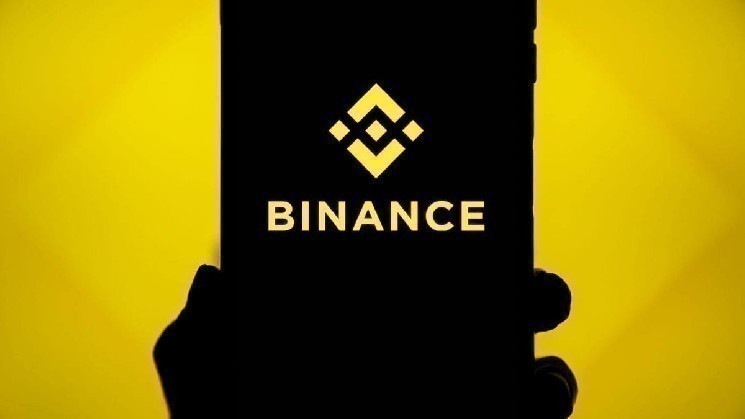
Author: IOSG Ventures

Abstract
BOB is a new type of L2: Hybrid L2. BOB leverages the security of the BTC L1, the most secure L1, to create a trustless bridge that connects BTC, ETH, and other L1 blockchains. Thus, the Hybrid L2 achieves interoperability without relying on third-party bridge tools, while also solving the problem of fragmented BTC multi-chain liquidity.
1. Introduction
BTC was created as a decentralized, transparent, and censorship-resistant payment system. Ten years later, smart contract chains have enabled the creation of DeFi applications and other innovative products, such as Non-Fungible Tokens, tokenized social media and games, and DAOs and other trustless governance structures. In this context, while the BTC L1 remains the core of global cryptocurrency adoption, it has lagged in innovation and developer activity.
Although the BTC L1 is slow-moving and lacks flexibility, it still dwarfs all other cryptocurrencies in terms of market capitalization, transaction volume, and active user numbers. As of October 2024, BTC has 300 million users, a $10 trillion market cap, and unparalleled brand recognition and dominance. However, BTC L1's DeFi activity is the lowest among all cryptocurrencies: Ethereum's DeFi TVL to market cap ratio is 30%, while BTC's DeFi TVL to market cap ratio is only 0.1%, a 300-fold difference.
Over the past few years, many have tried to introduce smart contracts and DeFi on the BTC L1 through protocol changes and forks, but these attempts have failed. The BTC L1 resists any upgrades that could significantly change its functionality or increase its complexity. As a result, the BTC L1 will not have native programmability like Ethereum for a long time, and BTC L2 will ultimately become the best DeFi solution within the BTC ecosystem.
1.1 Hybrid L2
Hybrid L2 is a BTC L2 solution aimed at addressing the main challenges of scaling DeFi on the BTC L1. This type of L2 often has three key attributes:
- BTC L1 security: Using BitVM2 to leverage OP verification and error proofs on the BTC L1.
- Trustless BTC bridging: Using an improved BitVM bridge design, where as long as the BTC L1 is secure and there is at least one honest node in the network to execute on-chain disputes, users can deposit and withdraw BTC. This new security model is called "existence is trust" (1-of-n), as it relies on minimized assumptions and is much more secure than existing BTC multi-sig bridges.
- Trustless Ethereum bridging: BOB leverages BTC L1 security, combined with the L1/L2 Ethereum OP rollups bridging design, to encode Ethereum L2 withdrawals as part of L1 smart contracts, ensuring the correctness of L2 withdrawals. This design can be extended to most L1 chains with smart contracts.
As the first Hybrid L2, BOB provides a practical trustless cross-chain interoperability solution: first, the BTC L1 as the most secure decentralized network can secure both the L2 and all cross-chain bridges. On top of that, BOB further solves the problem of fragmented BTC multi-chain liquidity - users can leverage native BTC liquidity and the BTC L1 secure withdrawal mechanism to deposit assets across various chains through the BOB network. Ultimately, BOB sustains the security and sustainability of the BTC L1 by paying fees to the BTC L1.
2. The State of BTC L2: Opportunities and Challenges
BTC L2 has the potential to bring innovation to the BTC L1 while preserving its core principles. It can unlock the prospects of DeFi use cases, empowering trading, lending, and staking without the need to rely on centralized exchanges. This represents a massive opportunity to unlock the trillion-dollar BTC market. Currently, dozens of chains have claimed to be "BTC L2".
However, building a successful BTC L2 is a daunting task, and previous attempts have not achieved the level of success seen with Ethereum. We believe there are three main challenges to successfully launching a BTC L2:
- BTC security and trustless BTC bridging: This is the key differentiator that sets BTC L2 apart from all others. The security of the BTC L1 allows users to deposit and withdraw BTC without relying on third parties. Until now, almost all BTC bridges have relied on multi-signatures. BOB is the first team in history to realize this blueprint through BitVM2.
- Building a competitive ecosystem: L2s can only succeed if their dApp ecosystems thrive. The key to creating successful products is providing the best developer tools and DeFi infrastructure, such as wallets, institutional custody, and oracles. This means the L2 team must keep up with the pace of development, such as millisecond-level transaction speeds and abstracted gas fees. If they cannot provide a competitive developer environment, BTC L1 applications will struggle to compete with Ethereum and other network competitors.
- Introducing blue-chip liquidity (cold start problem): In a DeFi ecosystem, introducing stablecoins, fiat on/off-ramps, and bridges to other networks is crucial. For developers, network effects are a decisive factor in the success of new products, so building projects on an isolated chain poses a significant challenge.
3. The BOB Background: Bridges, Light Clients, and BitVM
BOB's innovation primarily lies in three core technical concepts: cross-chain bridges, light clients, and BitVM. These technologies collectively constitute BOB's value proposition, so it is necessary to delve deeper into these three elements.
3.1 Light Clients
The BTC L1's "Simplified Payment Verification" (SPV) light client protocol allows nodes to perform payment verification without downloading the entire blockchain data. This method only requires the light client to verify consensus finality through block headers and can then validate based on the selected transactions.
BTC L1's light clients have verifiable security and can be verified by other blockchains with smart contract capabilities. For example, Threshold has been running such light clients on Ethereum for years. However, Ethereum does not have a secure light client, as it needs to store and track the public keys of over a million validators, increasing system complexity.
3.2 Cross-Chain Bridges
We have demonstrated two properties of "bridging" or "wrapping" assets across different blockchains:
a) It can allow both chains to operate correctly simultaneously;
b) It is difficult to achieve without a trusted third party.
In practice, we can reduce the reliance on third parties by allowing any network participant to take on the verification responsibilities. Through so-called "light client bridges", Chain A and Chain B can verify each other's consensus protocols through their respective smart contracts. When we deposit asset a into the bridge on Chain A, the smart contract on Chain B will verify that the transaction has reached consensus on Chain A before minting the wrapped token b(a). Conversely, when we burn b(a) on Chain B, we must first verify that the transaction has reached consensus on Chain A. This design has seen very few successful implementations due to the complexity of light clients.
3.3 BitVM
BitVM is a mechanism for executing arbitration programs on the BTC L1 in an OP manner. Its execution happens off-chain, with on-chain dispute resolution upon failure. Its two main use cases are BTC L1 OP aggregation (similar to Arbitrum) and trustless bridging. In both cases, BitVM allows users to deposit and withdraw BTC from the L2, as long as there is at least one honest node in the network to prevent theft of deposits.
The current most widely used version of BitVM is BitVM2. Its design summary is as follows:
- Compress the program to the SNARK verifier and implement it in the BTC L1 script.
- Divide the verifier into sub-program blocks of less than 4MB to execute in BTC L1 transactions.
- The BitVM2 operator submits the program through the Taproot tree and pre-signs the transaction during the setup period.
- Users deposit funds into BitVM2 (e.g., bridge deposits).
- When attempting to withdraw funds from BitVM2, anyone can challenge the operator.
- If challenged, the operator must reveal the results of all intermediate sub-programs and show the final computation result.
- If the operator cheats, some of the revealed sub-program results will be incorrect, and anyone can prove the operator's cheating by executing specific sub-programs.
- The cheating operator will be expelled and will no longer have access to the deposits.

Source: bitvm.org
Our latest paper will provide a detailed overview of BitVM2.
4. BOB Hybrid L2
The innovative design of BOB's Hybrid L2 is based on the concept of decentralized network trust in BTC L1 and its simplicity in consensus verification.
4.1 BTC L1 Security
BOB's Hybrid L2 will leverage BTC L1 for settlement and security guarantees. The currently recognized ideal design for BTC L2 is based on zk-rollups: all state changes are computed off-chain, and then verified and recorded on-chain through zk proofs. However, to date, BTC L1 has not been able to support zk-rollups due to the need for additional opcodes to avoid consensus forgery in BTC L1 scripts. Therefore, BOB achieves security through the OP verification of BitVM2. This method generates validity proofs for each state transition and publishes them along with the state diffs to BTC L1. When paired with BitVM2, any network participant can initiate a challenge through the fault proof mechanism and overturn failed operations within 7 days to ensure security.
This means that through BitVM2, we can allow any node in the network to participate in the fault proof mechanism, allowing them to raise challenges when errors are detected. This design makes the security almost equivalent to BTC L1 itself: as long as there is one honest and online node in the network, it can trigger the fault proof.
4.2 Trust-minimized BTC L1 Bridging
The BitVM2 fault proof also allows BOB to create a trust-minimized BTC L1 bridge. Specifically, this is a light client bridge, where BTC L1 supports BOB through a light client running in BitVM2. This bridge allows users to deposit BTC into the BOB network and withdraw back to the BTC L1 network, with guaranteed security. This new design relies on the "existential honesty" security model, requiring only a 1-of-n honest assumption to ensure correct operation, which is more stringent than the existing multi-signature bridge solutions.
In existing BTC bridges, most rely on multi-signature schemes and require honesty from the majority of signers. However, in the BitVM2 design, even if all bridge operators are dishonest, as long as there is one online participant in the network, the funds cannot be stolen. This design solves the security vulnerabilities of the multi-signature schemes and constitutes the most secure BTC bridge solution in history.
4.3 Trust-minimized Ethereum Bridging
BOB's Hybrid design also supports secure access to ETH and ERC20, similar to the Optimism design. When users wish to withdraw assets from L2 to Ethereum, they must wait for a 7-day challenge period to ensure there are no fault proofs. This mechanism provides security guarantees for the asset bridging between the Ethereum and BTC L1 networks, solving the inherent risks of cross-chain bridging.
In BOB's Hybrid L2 design, the ETH bridge smart contract will wait for BOB to complete the final confirmation on the BTC L1 network, ensuring that all proofs are correct. This functionality is part of the bridge smart contract, which can verify the BTC L1 blockchain and achieve this through a BTC L1 light client. Therefore, any user who deposits ETH and ERC20 tokens into BOB can retrieve these assets on Ethereum as long as the BTC L1 network is secure and there is at least one online node that can trigger the fault proof.

Source:BoB
5. Outlook: BOB as the Center of DeFi
The uniqueness of the Hybrid L2 will propel BOB to become the largest DeFi ecosystem in the industry. Currently, BOB is leveraging the network effects of BTC L1 and ETH, and will expand to other chains in the future.
5.1 Self-Reliance through Ethereum
For dApps built on BOB, they can benefit from Ethereum's best-in-class infrastructure and development tools, while introducing the core DeFi user base and establishing connections with all exchange and institutional players. Notably, almost all Ethereum users have BTC, and most BTC users also use ETH DeFi.
5.2 Growth Driven by BTC L1
Over time, the trust-minimized BitVM2 bridge, along with the additional security and access to BTC provided by BTC L1, will unlock more untapped BTC liquidity pools and allow dApps on BOB to not only catch up with their Ethereum counterparts, but also surpass them. This effect will be further amplified by the global adoption and diverse user base of BTC L1: in contrast to ETH L2 competing for the same user base, BOB's dApps can leverage the over 300 million BTC user base and thousands of real-world enterprises.
5.3 BTC L1 as the Multi-Chain DeFi Center
BTC L1, ETH, and stablecoins occupy 90% of the market. However, just like the existing banks, we believe that hundreds of chains will emerge in the future, each focusing on different applications or geographic locations. All of these chains will need secure access to BTC L1, and a way to exchange assets between them.
Today, centralized exchanges play this role: they connect all chains, allow users to deposit and withdraw assets, and convert assets to the corresponding L1. However, centralized exchanges have also caused major problems in the past and will continue to do so until we fully transition to DeFi.
Instead, BOB's mission is to make BTC L1 the foundation of a secure and transparent DeFi ecosystem. As a Hybrid L2, BOB will securely bridge assets to any smart contract chain that can verify the BTC L1 blockchain through BTC. This means that the modern 90% of L1 and L2 chains, including Solana, TRON, Sui, Aptos, Monad, Avalanche, Cosmos, and Polkadot, can securely deposit and withdraw assets through BOB. All of this is done through trust-minimized operations on BTC L1, without relying on third-party bridges.

Source:BoB
Using BTC L1 as a trust anchor to create an interoperable DeFi ecosystem is the core advantage of the Hybrid L2 design. Rather than dispersing BTC L1 liquidity across dozens of chains, BOB will concentrate liquidity around BTC, providing a truly viable alternative to centralized exchanges and placing BTC at the center of DeFi.
6. Conclusion
The BOB Hybrid L2 solves some of the most pressing challenges in building a decentralized financial system on top of BTC L1. It provides the necessary infrastructure by creating a BTC bridge that inherits the security of BTC L1 and maintains trust minimization, allowing a wide range of users to join the BTC L1 without relying on centralized service providers. At the same time, BOB's trust-minimized bridging to Ethereum and other smart contract L1 chains prevents the fragmentation of BTC liquidity and provides a practical, BTC L1 security-based solution to the long-standing issue of cross-chain interoperability, making BTC the core of DeFi.








